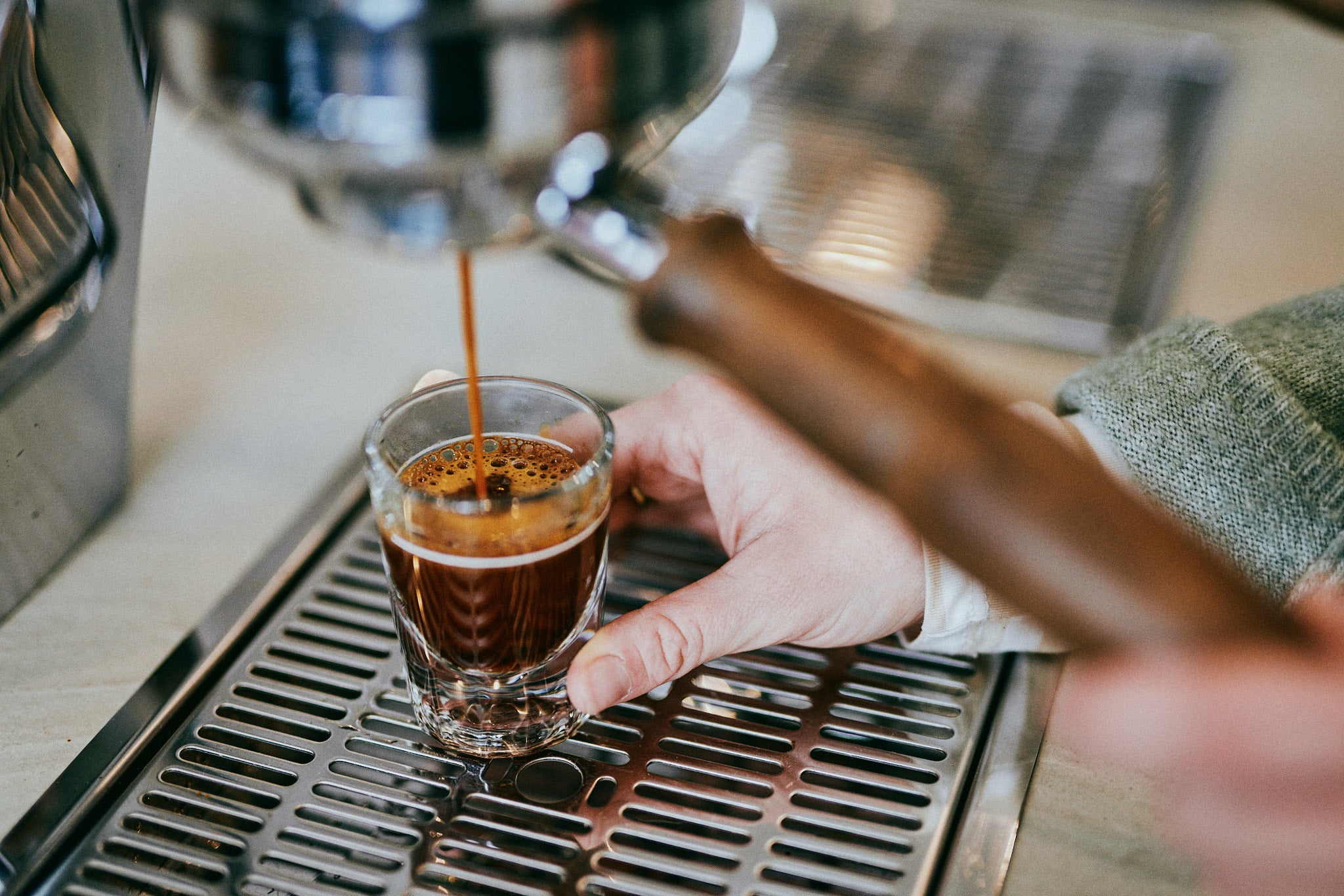- By Alex Lafrenière
Magic equation for a successful coffee
Magic equation for a successful coffee
Let's get our first head-to-head off to a good start and explore the extraction parameters you need to brew the best coffee possible. Ultimately, coffee brewing is a science that can rely on fixed variables. Although taste is subjective, the fact remains that certain basic rules can be followed to achieve the desired result in the cup: a balanced, complex and smooth espresso.

Parameter relationship
The first parameter to consider is the ratio (ground coffee: espresso). Here we target the proportion of coffee extracted in relation to the initial dose. The most commonly used ratio throughout the world is 1:2. We therefore say that for an initial quantity of coffee in grams, we will have double the amount of espresso, also calculated in grams.
The second parameter has the greatest effect on coffee extraction, but also happens to be the easiest to modify. We are talking here about grinding or, in other words, how finely we shred the coffee beans using our grinder . The grind has a direct impact on a third parameter of great importance: the extraction time .
When a grind is finer, it will apply greater resistance against water trying to sneak into the coffee wafer and it decreases the flow rate. On the other hand, the water must find a way to dance with the coffee particles for long enough to extract as much of its aromas as possible. If the water slides too quickly into the coffee wafer, the cup of espresso risks being rather disappointing: too liquid, acidic and unsafe in the mouth.
(Almost) PRO TIP : If you have a penchant for darker roast coffees, note that decreasing the ratio allows you to highlight the intensity and bold notes of the bean while limiting bitterness.


Float in a cake
The final variable in the chemical equation for coffee to your liking is temperature . This parameter is vital because without hot water, it is not possible to bind and unbind the coffee molecules and thus extract their benefits. Here you can adapt the temperature to the roast level of your coffee bean and according to your personal preferences. As a guide, the ideal temperature for balanced extraction should be between 88 and 96°C. Raising the temperature beyond this range risks over-extracting the coffee and resulting in a more bitter finish. Conversely, too low a temperature can result in an acidic, dull finish to the cup.
Finally, there remains one wild card not to forget when making coffee: the quality of the water . Being full of minerals, calcium and other unwanted particles, water can interact with coffee molecules and alter its taste. Opting for, for example, carafe-filtered water can help maintain the aromatic balance of the coffee. While coffee is made up of up to 98% water, it has every interest to be as pure as possible.
FUN FACT : At the Faux Mouvement café, the water is purified using a reverse osmosis machine. A permeable membrane filters unwanted ions and particles from the water to ensure the quality of every cup.
Now, by respecting the magic equation of a 1:2 ratio + an adequate grind and extraction time + a temperature between 88°C and 96°C, we ensure that we only drink rich and tasty espressos. ...as we deserve them !
Good coffee :)
-Alex


